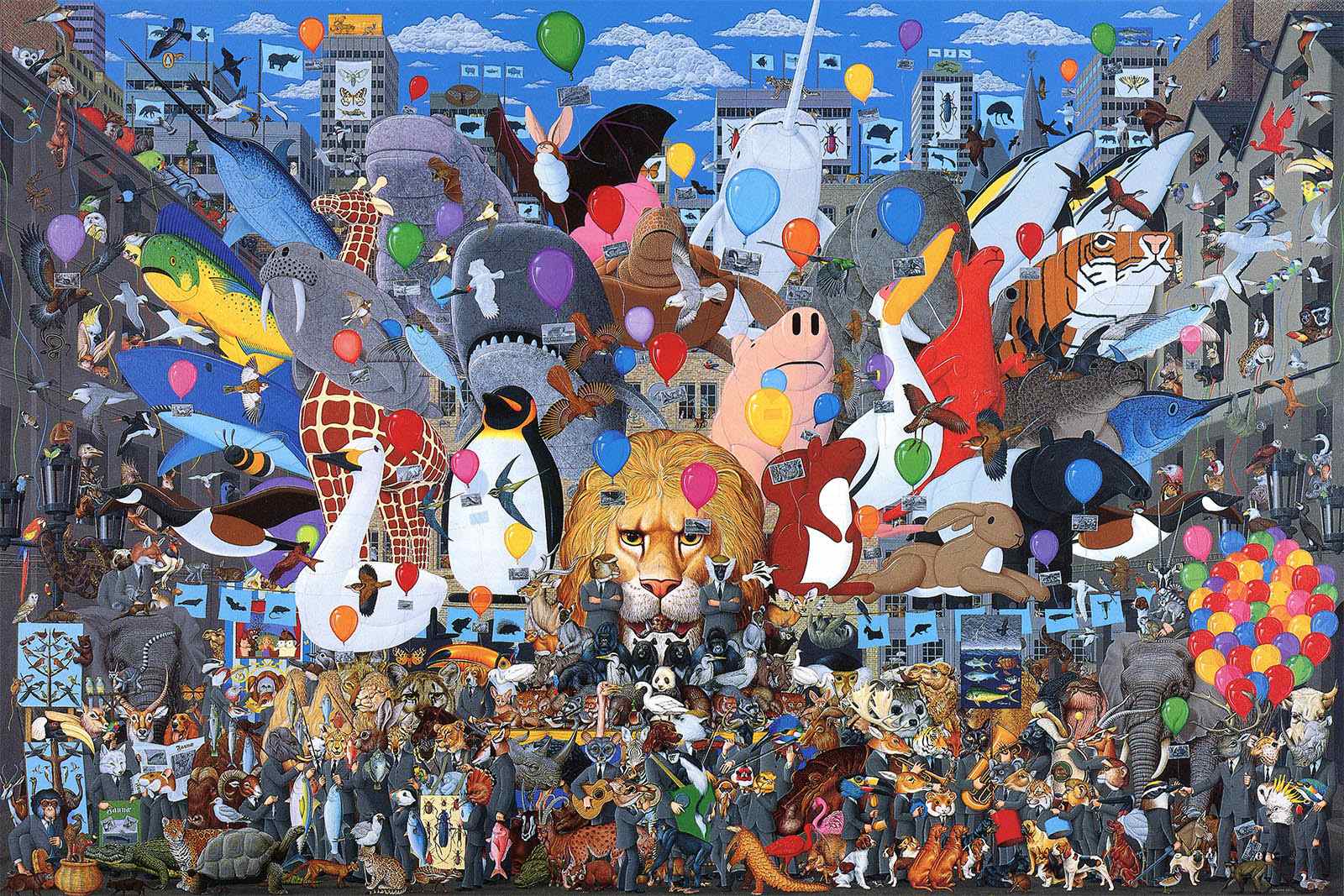
The Clock Without a Face: ages eight and up. Enigma: A Magical Mystery: ages five and up. The Eleventh Hour: teens.
Nonsense.
Heavily illustrated treasure hunt books are some of the best picture books around for toddlers. No matter what your child is into, the lush pages meant to confuse and overwhelm solvers are fertile ground for your own imagined games.
This struck me last year when I bought a copy of Mike Wilks‘ The Ultimate Noah’s Ark to share with my 18-month-old daughter. She’s always been keenly observant and fond of animals, and I thought she’d like this decades-old puzzle book.

The book is full of animals. Some are obvious and drawn in full. Some are subtle or only partially drawn. Three hundred fifty-three types of animals are there, somewhere, in male and female forms. One animal is there just once. The puzzle, solved long ago, is to find the one creature without a date.
From the day my daughter saw it, it’s been a favorite. She constructed a game right away: pointing to monkeys. Then she’d point to other animals she knew. Then she’d point to animals she didn’t know and we’d name them as well as we could. Peregrine falcons. Scarlet macaws. Dugongs. Dolphinfish. Okapis.
We turned the questions around. Where’s the peregrine? Where’s the hammerhead shark? Where’s the loris? At first she didn’t know. And then she did. We’d offer hints if she needed them, telling her the animal was in the upper left or to the right of an animal she did know.
As she learned her colors, we made new games. Do you see a red balloon? As she learned her numbers, the games changed again. How many monkeys? How many orange balloons? No matter what she was focusing on, we found a way to adapt the book to our needs.
With each new game, I watched her struggle at first and then gain trust in her new skills and confidently point to the right answer.
The newest game is one for both of us. Look up animals in the index I don’t know, look up their photos online, find them in the book. No key exists, said Wilks when I emailed him, but now I’m working to change that. (I accept pull requests!)
Distinguishing a blue-winged pitta from a blue tit or a corncrake from a collared pratincole is probably not a valuable skill for someone still in diapers, but she loves going through what she still calls, almost a year since the first game she devised, the monkey book.
The Ultimate Noah’s Ark is tailor-made for my daughter’s interests, but I’ve trotted out other puzzle books as well. She loves talking about the animals (of course) in Graeme Base’s classic The Eleventh Hour; I love pointing out all the ciphers and talking about how they work. I just ordered Base’s more recent Enigma: A Magical Mystery, which is aimed at kids closer to her age, and I’m looking forward to showing it to her. The Clock Without a Face has been less popular, no doubt because it lacks animals, but I trot it out periodically to try it.
Games and puzzles exist wherever you want them to. Your toddler may not be cracking the codes in puzzle books — yet — but she’ll still like looking at the tiny details and fantastic vistas they contain. And who knows: When a new treasure hunt book — or just another armchair hunt — comes out one day with an as-yet-unclaimed prize, she’ll be ready to dig in with you.

